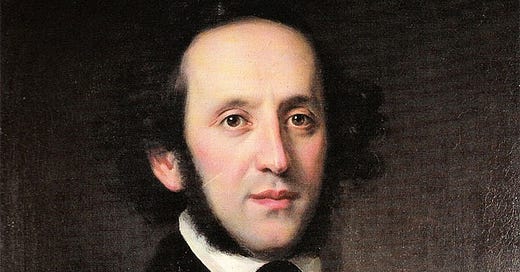January 25 - Mendelssohn's "Wedding March" Unveiled
Exploring the Depth of Covenant in Marriage through Mendelssohn's Timeless Composition
This is the day Felix Mendelssohn's "Wedding March" was first played at the wedding of Queen Victoria's daughter Princess Victoria, to the crown prince of Prussia, in 1858.
In today's devotional, we w…




